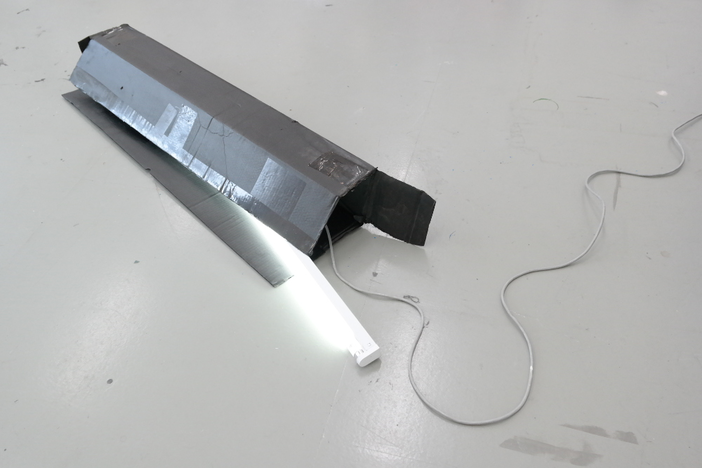Material and Time
Let’s perhaps dwell a bit longer on this temporal process of making with regard to material. In the case of Van Gogh’s self portrait it is a description of materials made after the completion of the work. The talks with artists reveal a potential of material, a projection of a work pointing to a possible future. But if we try to extrapolate the material from these descriptions in the present we are confronted with a gap. This seems logical: During the work process the material is used, but not called as such. This abstract naming can only be done with difficulty and distraction parallel to the actual work with the material.
As a result, this presence of the material is often simply ignored, which the notion of material advocated by art historians also illustrates: Material is that which is intended to be used in an artwork. “In general, material, unlike matter, refers only to natural and artificial substances intended for further treatment.”(5)
Put pointedly, this implies that artworks do not evolve in the making rather follow a predefined concept that already stipulates the material. Perhaps this might be the case in the classical art canon, but it certainly no longer applies, latest since the advent of the collage and assemblage in the art world at the beginning of the twentieth century.
So it seems that material never exists in the present. Maybe this has to do with the fact that material as such is simply not perceived in the moment as something independent, something separate from the body working with it.(6) But precisely this blind spot, this existence of material in a nascent present is central to the becoming of material.(7)
(5) Monika Wagner, “Material,” in Materiality, ed. Petra Lange-Berndt (London and Cambridge: Whitechapel Gallery and MIT Press, 2015), 26.
(6) Research has shown that tools are perceived as parts of the body when in use. When we hold a hammer firmly in the hand we feel its impact on the nail in all its details. The brain incorporates the hammer into the body. Can it be that the same thing happens with material, in general, not just with the tools? Cf. Karen Sherman, “The Glory Hole,” e-flux journal 87, http://www.e-flux.com/journal/87/164528/the-glory-hole/ (accessed on Oct. 7, 2018).
(7) From this perspective, interestingly, the concept of time can be resolved: Naturally, I must first acquire a brush and paint in order to paint something, but in the act of painting this process of acquiring is equally so present—without it I cannot paint. So this acquisition and painting exist parallel and without difference in a nascent present. Thus, material becomes an anchor point to construct time when one looks at certain properties and their changes in the process of becoming. Because all possible states are present in material at all times. Cf. Barad, Universe, 180.

